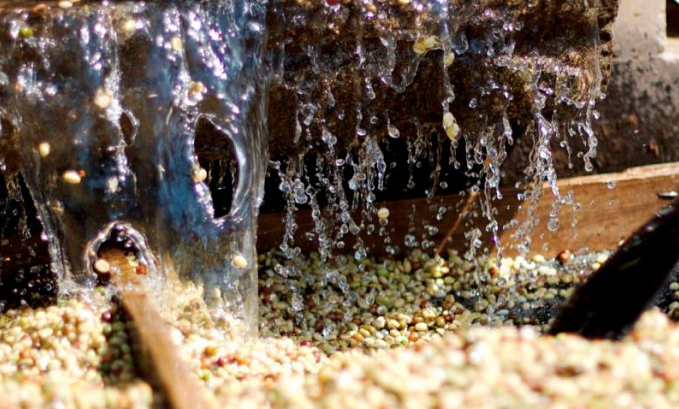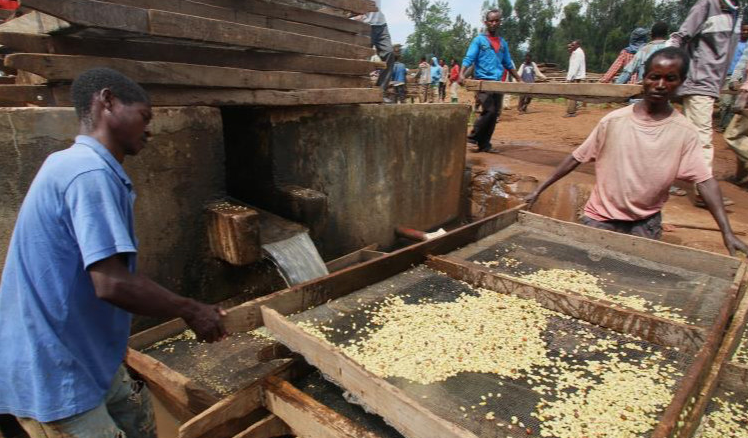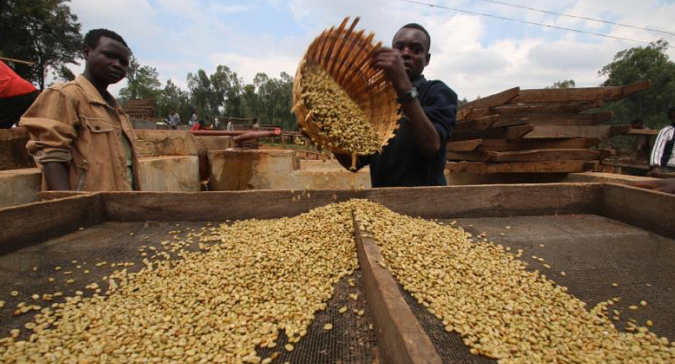What do you have in sour coffee? The recommended method of washing coffee beans and the characteristics of shallow roasting coffee beans in the place of origin of coffee.
Some friends do not like to drink bitter coffee, like to drink sour delicious coffee, so what coffee beans meet this characteristic?
Personally, Ethiopia's washed Ye Jia Xue Fei is particularly consistent, its acid is bright, full of flavor, is a very high cost performance coffee beans.

Why wash? Because the washing method can highlight the acidity of coffee beans, and its flavor will not be very complex, you can clearly feel its charm.
Here is a brief introduction to the processing of washed coffee beans;
The coffee we see in daily life refers to the innermost 20% of the seed part of the coffee fruit, and the structure of the coffee fruit includes the following: epidermis-pulp-pectin layer/mucilage-seed cortex/sheepskin layer-silver skin-raw beans
Step 1: Wash/collect/float/rinse
Coffee fruits are sent for processing immediately after picking, usually within 6 to 12 hours of picking. Coffee fruits are weighed and then soaked in water in order to select fruits that float because they are not of good quality.
Step 2: Peeling/beating
The fruit is then fed to a beater for peeling, a step that removes the skin and pulp from the fruit.

Step 3: Fermentation/degumming
The fruit, stripped of pulp and peel, is sent to a fermentation tank or vat for 18 to 36 hours, where enzymes break down the mucus/pectin in the fruit.
Step 4: Wash
The de-gelatinized coffee fruit will be washed with appropriate amount of water in the pool. During the washing process, the pectin decomposition products on the surface of the coffee beans will be removed by agitation. After washing, the coffee sheepskin layer, silver skin and green beans will be left.
Step 5: Drying
After washing, the beans are sorted to remove defective beans. It is then sent to a drying place (tarpaulin, concrete floor, high bed, etc.) for drying. Drying treatment will depend on environmental climate and other factors to determine the length of time, generally can be 5 to 14 days. The moisture content of the beans drops from 55% to 11%.

Step 6: Storage
The dried coffee beans are called shelled beans-green beans with a sheepskin layer. The shelled beans are sent to storage and shelled before export.
Washing method Its characteristics are: washing method of coffee acid is more obvious, cleanliness is better, moderate touch, the most consistent quality of raw beans.
Important Notice :
前街咖啡 FrontStreet Coffee has moved to new addredd:
FrontStreet Coffee Address: 315,Donghua East Road,GuangZhou
Tel:020 38364473
- Prev

How do espresso drink flavor characteristics describe espresso is bitter? What kind of coffee beans are not bitter?
"what's so good about this bitter stuff?" This should be the impression of many people on espresso. When many people first came into contact with espresso, they walked into a cafe, saw the unit price on the menu, gently wiped a cold sweat, and trembled to order a cup of coffee with the lowest unit price. Unexpectedly, one was brought up.
- Next

The coffee's too sour. What's going on? Hand brewed coffee is sour and bitter. What's going on? Barista hand-brewed coffee extraction tutorial.
The coffee's too sour. What's going on? Hand brewed coffee is sour and bitter. What's going on? Today, I teach you why this situation occurs. Generally speaking, sharp acid and sharp bitterness are not good phenomena in coffee. Sharp acid may be "insufficient extraction", sharp bitterness is "excessive extraction", and that sour and bitter is what's going on? may be
Related
- Beginners will see the "Coffee pull flower" guide!
- What is the difference between ice blog purified milk and ordinary milk coffee?
- Why is the Philippines the largest producer of crops in Liberia?
- For coffee extraction, should the fine powder be retained?
- How does extracted espresso fill pressed powder? How much strength does it take to press the powder?
- How to make jasmine cold extract coffee? Is the jasmine + latte good?
- Will this little toy really make the coffee taste better? How does Lily Drip affect coffee extraction?
- Will the action of slapping the filter cup also affect coffee extraction?
- What's the difference between powder-to-water ratio and powder-to-liquid ratio?
- What is the Ethiopian local species? What does it have to do with Heirloom native species?

